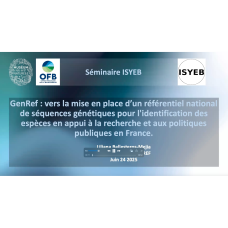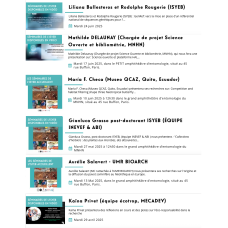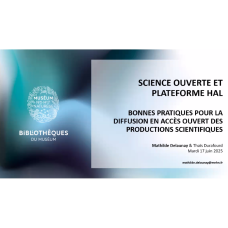Marie Walde de la Station Marine de Roscoff (Sorbonne Université)

ISYEB

ISYEB
Viruses not only infect humans – but also marine diatoms, some of the most globally distributed and ecologically successful organisms in the ocean. Due to their large biomass and blooms, they represent an important component of the marine carbon and silicon cycles. Marine RNA virus infections seem to play a crucial role in the termination of these blooms e.g. of the species Guinardia. However, we currently understand very little about the extent to which viruses infect natural diatom populations and their cascading effect on the marine food-web and global biogeochemical cycling1.
The detection and the quantification of RNA viruses, whether extracellular or intracellular, remains a hurdle due to their small size (25-35 nm) and low genome content (9 kb). Transmission electron microscopy images have revealed that these viruses accumulate in the cytosol of infected Guinardia2. While they remain too small to be resolved by diffraction-limited light microscopy, we have recently succeeded to develop an imaging assay to detect these accumulations in infected cells from marine cultures with confocal microscopy. To gain insights on a population level and estimate abundances we need many observations of individual cells, which make high-throughput methods indispensable.
Based on previous work on environmental high-throughput microscopy for the diversity of marine plankton3, I am developing automated acquisition and image analysis tools to enable us study ecologically relevant numbers of cells and monitor natural populations. First experiments in culture have shown the feasibility of this approach. With the upcoming spring blooms in the Western English Channel, we currently attempt this assay for the first time in environmental samples to study biotic interactions in natural plankton communities and answer open questions regarding viral abundance and mortality. In the future, we would like to consolidate this work with correlative electron & light microscopy (CLEM) for virus identification.
In this talk, I will explain both the ecological context of this research as well as optical tools we currently have (and lack!) to answer them.
1. Rohwer & Thurber. « Viruses manipulate the marine environment. » Nature (2009)
2. Arsenieff et al. « First viruses infecting the marine diatom Guinardia delicatula. » Frontiers in Microbiology 9 (2019)
3. Colin et al. « Quantitative 3D-imaging for cell biology and ecology of environmental microbial eukaryotes. » eLife 6 (2017)



